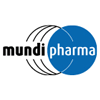Mundipharma receives positive EC decision on Targin® (oxycodone / naloxone) for Restless Legs Syndrome
Posted: 7 January 2015 |
Mundipharma announced that Targin® (Targinact®, Targiniq®), a fixed combination of prolonged-release oxycodone/naloxone, has received a positive European Commission decision for a new indication, as a second line symptomatic treatment for patients with severe to very severe idiopathic restless legs syndrome (RLS), after failure of dopaminergic therapy…


Mundipharma today announced that Targin® (Targinact®, Targiniq®), a fixed combination of prolonged-release oxycodone/naloxone, has received a positive European Commission decision for a new indication, as a second line symptomatic treatment for patients with severe to very severe idiopathic restless legs syndrome (RLS), after failure of dopaminergic therapy.1,2
Oxycodone/naloxone is the first opioid which has been granted a licence in the EU for the treatment of RLS.1 This new licence indication provides a viable treatment option for patients who cannot tolerate the existing available treatments or who are not able to gain the level of symptom relief required.2
Up until now, symptomatic treatment of idiopathic RLS included mainly dopamine agonists or dopaminergic substances such as L-dopa, however long-term use can lead to worsening of the symptoms in many individuals.3
Oxycodone/naloxone is currently licensed for the treatment of RLS in Germany only, in the same second line setting as in the recent positive European Commission decision, which is legally binding and needs to be implemented into the national marketing authorisations within 30 days.
Data published in the December 2013 issue of The Lancet Neurology supports the basis of this new indication approval. Findings from the 12 week double-blind, randomised placebo-controlled trial with a 40 week open-label extension, showed:4
- A significant improvement in the Mean International RLS Study Group rating scale (IRLS) in the prolonged release oxycodone/naloxone group vs. placebo (-16.5 vs. -9.4; p<0.0001) at 12 weeks.4 This translates into a significant clinical improvement from “very severe” at start of treatment to on average “mild” or “moderate” at the end of the double-blind phase.
- A beneficial effect of treatment with prolonged release oxycodone/naloxone at the end of the 40-week open-label extension phase (mean sum score of 9.7 at week 40 compared to a starting score of 15.4), providing evidence of longer term efficacy for prolonged release oxycodone/naloxone.
- Improvements in the quality and quantity of sleep for patients in the oxycodone/naloxone group vs placebo, with fewer RLS symptoms when going to sleep and during the night vs. placebo.
- That 42% of patients in the oxycodone/naloxone group were considered IRLS remitters at 12 weeks, versus 19% in the placebo group. Furthermore, at the end of the 40 week extension, 43% of patients were considered remitters, and 22% of remitters (by International RLS Study Group severity rating scale) were asymptomatic.
- No augmentation seen over the entire 52 week study period.
- An adverse event profile for oxycodone/naloxone over the entire study period that was consistent with the safety profile of opioids, with “very common side effects” (those occurring in ≥1/10 patients) including gastrointestinal disorders, headache, somnolence, fatigue, pruritus and hyperhidrosis.
“RLS can have a devastating impact on a patient’s life. The manifestation of physical symptoms at night time can disturb sleep which can lead to profoundly disruptive daytime fatigue, impaired concentration and even feelings of depression. This new indication for Targin provides a much needed new treatment option for people with RLS who are not gaining sufficient relief from their symptoms.” said Prof.Dr. Karen Reimer, Managing Director, Mundipharma Research Limited.
References
- European Commission. List of referrals for human medicinal products. Available at: http://ec.europa.eu/health/documents/community-register/html/ho25423.htm [Accessed January 2015]
- European Medicines Agency – Committee for Medicinal Products for Human Use (CHMP) – http://www.ema.europa.eu/ema/index.jsp?curl=pages/medicines/human/referrals/Oxynal-Targin_and_associated_names/human_referral_000384.jsp&mid=WC0b01ac05805c516f [Accessed January 2015]
- National Institute of Neurological Disorders and Stroke – Restless Legs Syndrome Factsheet Available at: http://www.ninds.nih.gov/disorders/restless_legs/detail_restless_legs.htm [Accessed September 2014]
- Trenkwalder C, Beneš H, Grote L et al. Prolonged release oxycodone–naloxone for treatment of severe restless legs syndrome after failure of previous treatment: a double-blind, randomised, placebo-controlled trial with an open-label extension. The Lancet Neurology 2013; Vol. 12, Issue 12, Pages 1141-1150. Available at: http://www.thelancet.com/journals/laneur/article/PIIS1474-4422(13)70239-4/fulltext [Accessed November 2014]




